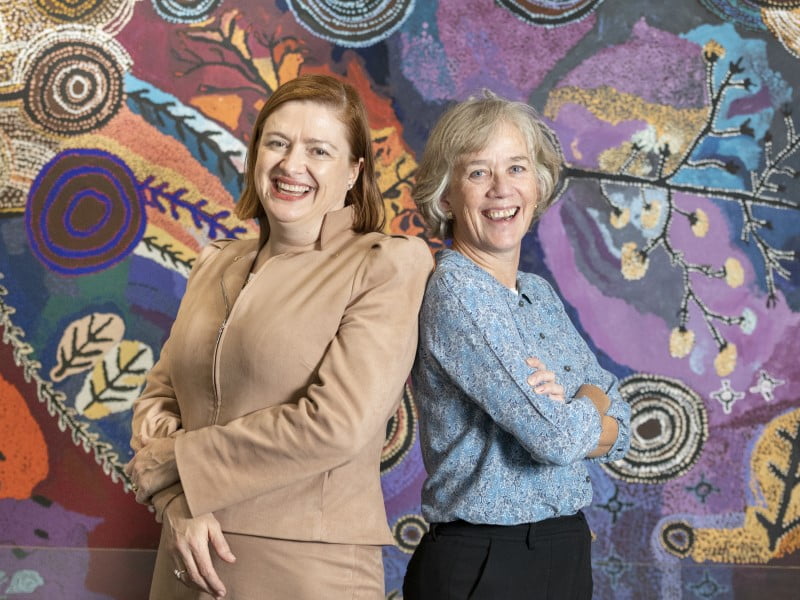Australia and the United Kingdom will deepen defence research ties as early bilateral quantum tech collaboration shows signs of success, according to the top defence scientists from both nations.
Given ongoing geopolitical tensions, Australia’s chief defence scientist Professor Tanya Monro said that Australia needs to collaborate with its closest allies and partners to manage the threat of “potential adversaries”.
In particular, she wants to build on the roughly “70 years’ track record of working together” with the United Kingdom.
Over the three years she has been Australia’s chief defence scientist, Professor Monro said there has been a significant shift in the approach to international research collaboration.
“It has moved away from “predominantly a bottom-up, strong, trusted scientist-to-scientist partnership to being one where our nation’s top priorities are being fused together to work out what we can do that will make the best difference. And I see that as a significant shift,” Professor Monro said.

Professor Monro said that Australia’s quantum strategy, currently being developed by chief scientist Cathy Foley, can learn from the United Kingdom’s £1 billion National Quantum Technologies Programme.
The programme facilitates industry, academia, and government collaborations through the provision of fellowships, four commercialisation hubs, training programs, and grants.
The United Kingdom’s chief scientific adviser to the Ministry of Defence, Professor Dame McLean, said the relationship has been underpinned by two principles: paired excellence — collaborating in sectors that both countries are proficient at — and complementarity, or the ability to support each other’s capability gaps.
The Australian Defence Science and Technology Group has eight staff exchanges with the United Kingdom’s Defence Science and Technology Laboratory to facilitate transfer knowledge between the organisations.
Media was briefed about ongoing defence science collaborations outside of AUKUS by the head defence scientists. Dame McLean was in Australia to attend the Defence Science and Technology Group’s achievement awards last week and to tour several of its facilities.
Both head scientists highlighted quantum technologies as an example of paired excellence. While Professor Monro noted that Australian research is particularly strong in producing quantum clocks and quantum sensor technologies, Dame McLean said the United Kingdom has a breadth of quantum computing strengths.
Since 2020, the two countries have jointly supported a cohort of around 20-30 quantum science PhDs for Defence. This includes funding and the creation of research projects to help “fast track the training of highly skilled quantum experts for both our defence research ecosystems”, according to Professor Monro.
“The first wave of those students from both countries is nearing completion, which is very exciting. We now have a pretty good sense of which country has got the lead on what. And we’re now starting to work out how to integrate them.”
This culminated in the test deployment of quantum sensors on a New Zealand frigate during the Rim of the Pacific Exercise (RIMPAC), the largest international maritime exercise.
When it comes to supporting the quantum industry in each country, Dame McLean said she is concerned with solving defence problems, so welcomes solutions from both the public and private sectors. She added that the Ministry of Defence can help small to medium-sized enterprises (SMEs) scale by being a forgiving first customer, using procurement to support innovative firms even at the prototype stage.
Professor Monro similarly noted the importance of Defence in supporting the quantum sector.
“Defence has been supporting seed funding into a number of the quantum computing centres of excellence. Our role in this space is about setting the right problems for the industry ecosystem and the SMEs to target,” Professor Monro said.
“In quantum computing I see some of the biggest, hairiest problems that we’re likely to be the lead sponsors for. Things like real-time analysis of satellite imagery, this is a really good foundational form of quantum computing, or quantum assisted computing.”
Professor Monro is also working alongside Dame McLean to help reduce the barriers to attracting “cutting-edge companies” from overseas to work collaboratively on prototypes and demonstrations.
Last month, CSIRO increased its projected value of the Australian quantum industry in 204o by $600 million to $4.6 billion. The modelling predicts that the sector will employ as many Australians as the oil and gas sector does today.
A week prior, seven key objectives and potential policy initiatives for Australia’s upcoming national quantum strategy were revealed. This includes a call to “strengthen domestic and international partnerships, and entrench Australia’s role as an international quantum leader”.
Do you know more? Contact James Riley via Email.

